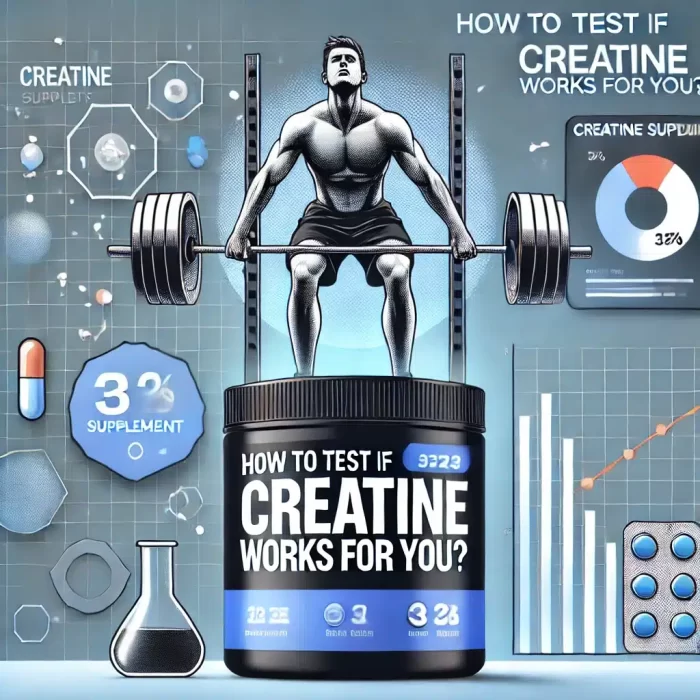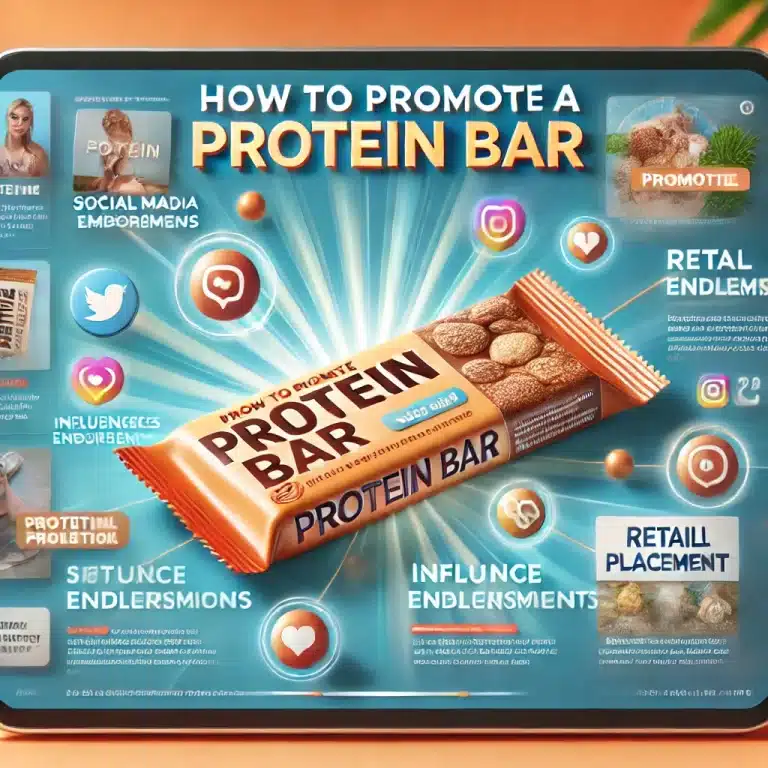How To Test If Creatine Works For You?
If you’ve ever wondered, “Is creatine doing anything for me?” you’re not alone.
While creatine is one of the most researched and effective supplements for strength and performance, individual responses can vary. Some people experience significant gains, while others notice minimal changes. So, how do you know if creatine is working for you?
In this guide, we’ll break down how to test creatine’s effectiveness, what signs to look for, and tips to get the most out of your supplement. Whether you’re taking it in powder, capsule, or gummy form, here’s how to find out if creatine is worth it for you.
1. Understand What Creatine Does
Before you start testing, it’s essential to know what creatine does. Creatine is a naturally occurring compound found in your muscles and brain, and it plays a key role in helping your body produce energy, especially during high-intensity activities.
At its core, creatine helps generate more ATP (adenosine triphosphate), the primary energy source your body relies on for quick, explosive movements like sprinting, lifting heavy weights, or intense HIIT sessions. Think of ATP as your body’s “fuel,” and creatine acts like an extra gas tank, giving you that boost when your muscles demand more power.
What does this mean for you in real-world terms?
- Increased Strength: You might find yourself pushing heavier weights or cranking out more reps with less fatigue.
- Improved Power Output: Whether it’s jumping higher, sprinting faster, or hitting harder, creatine helps you perform at peak levels.
- Faster Recovery Between Sets: Creatine helps replenish your energy stores quicker, so you’re ready for the next round with less downtime.
- Enhanced Muscle Fullness: Creatine pulls water into your muscle cells, making them look and feel fuller. This isn’t just for aesthetics, it aids in muscle function and hydration.
It’s important to set realistic expectations. Creatine isn’t a magic pill. If you’re expecting overnight fat loss or to suddenly run a marathon faster, that’s not what it’s designed for. Creatine shines in activities that require short bursts of power and strength.
What’s Even More Interesting?
Creatine doesn’t just benefit your muscles. Recent research suggests it can also support brain health, improving cognitive function and mental clarity, especially during stressful situations or sleep deprivation.
So, when testing if creatine works for you, focus on these key areas: strength, power, recovery, and muscle volume. If you notice improvements in these areas over time, chances are creatine is doing its job.
2. Establish a Baseline
Before you can measure any progress, you need to establish a clear starting point, this is your baseline. Think of it like setting the “before” picture in your fitness journey. Without it, you won’t have a reliable way to determine if creatine is making a difference.
Why does a Baseline Matter?
Your baseline helps you compare where you started to where you ended up after using creatine consistently. Even small improvements can be hard to notice if you’re not tracking the right metrics.
How to Set Your Baseline Effectively?
Spend 1-2 weeks tracking the following key areas:
- Lifting Stats: Record your current performance for exercises like squats, bench presses, deadlifts, or any other lifts that matter to you. Track the maximum weight you can lift, the number of reps you can perform at a given weight, and your overall workout endurance.
- Sprint Times or Cardio Performance: If speed or endurance is part of your fitness goals, time your sprints or measure how far you can run at a steady pace before feeling fatigued.
- Body Weight and Composition: Weigh yourself under the same conditions (same time of day, similar clothing, etc.) and, if possible, track body composition metrics like muscle mass and body fat percentage. This helps you differentiate between water weight, muscle gain, and other fluctuations.
- Energy Levels and Recovery: Pay attention to how you feel during and after workouts. Are you gassed out after a few sets, or do you recover quickly between exercises? Rate your energy levels on a scale of 1-10 before, during, and after your workouts.
Keep Things Consistent:
For the baseline to be accurate, try to keep the following variables as consistent as possible:
- Workout Routine: Stick to the same exercises, sets, and reps each session.
- Diet: Keep your nutrition habits steady, as changes in calorie intake or macronutrients can influence performance.
- Sleep: Aim for consistent sleep patterns, as rest greatly affects energy and recovery.
Track Your Data:
Consider using a workout journal, fitness app, or even a simple spreadsheet to track your numbers. This makes it easier to identify trends and measure improvements once you start taking creatine.
By establishing a clear baseline, you’ll be able to see if creatine is making a real impact on your strength, performance, and recovery over time. Plus, it’s incredibly satisfying to look back and see how far you’ve come!
3. Start with the Right Dosage
For creatine to work effectively, you need to take the right amount. The standard dosage recommendations work well for most people, but tailoring the dose based on your body weight can optimize results.
Loading Phase (Optional)
The loading phase is designed to saturate your muscles with creatine quickly. While it’s optional, it can help you see results faster.
- 20 grams per day, split into 4 doses of 5 grams each, for 5-7 days.
- After the loading phase, transition to the maintenance phase.
If you prefer to skip the loading phase, you can still achieve the same benefits; it just might take a few extra weeks.
Maintenance Phase (Based on Body Weight)
After the loading phase (or if you skip it), you’ll move to the maintenance phase, where the goal is to keep your muscle creatine levels saturated.
Here’s how to calculate your creatine needs based on body weight:
- Under 150 lbs (68 kg): 3 grams per day
- 150–200 lbs (68–91 kg): 4–5 grams per day
- 200–250 lbs (91–113 kg): 5–6 grams per day
- Over 250 lbs (113+ kg): 6–7 grams per day
If you’re in between these ranges, aim for the higher dose if you have a more intense training schedule.
How to Take Creatine for Best Results?
- Timing: You can take creatine anytime, but many people prefer post-workout with a meal. Some studies suggest that taking it after exercise may slightly enhance absorption.
- Mixing: Creatine dissolves well in warm water or juice. Some even prefer it in their shakes or as creatine gummies for convenience.
- With Carbs: Pairing creatine with simple carbohydrates (like fruit juice) can improve absorption because of the insulin spike that helps shuttle creatine into muscle cells.
Hydration is Key:
Creatine draws water into your muscles, which means your hydration needs will increase. Aim for at least 3 liters (or about 100 ounces) of water daily to avoid dehydration-related side effects like cramps or headaches.
What If You Miss a Dose?
Don’t stress if you miss a day. Creatine isn’t like caffeine, where you feel immediate effects. Just pick up where you left off. Consistency over time is what matters most.
By adjusting your creatine intake based on body weight, maintaining proper hydration, and being consistent, you’ll set yourself up to see real, measurable results.
4. Track Your Performance

Tracking your performance is where the magic happens. It’s how you’ll know if creatine is doing its job. Without measurable data, it’s easy to overlook subtle but significant improvements. Here’s how to effectively track your progress:
What to Track:
- Strength Gains:
- Reps & Sets: Are you able to lift heavier weights or complete more reps with the same load?
- Personal Records (PRs): Track your PRs in key lifts like the squat, deadlift, bench press, and overhead press.
- Power Output:
- Sprint Speed: Time your sprints over a set distance (e.g., 40m dash) and note any changes.
- Explosiveness: Measure jump height or the distance of broad jumps to gauge improvements in power.
- Endurance and Recovery:
- Short Rest Performance: See if you recover faster between sets, allowing you to maintain intensity with less rest.
- Perceived Exertion: Rate how hard your workouts feel on a scale from 1 to 10.
- Muscle Fullness & Appearance:
- Take progress photos under consistent lighting and conditions.
- Measure muscle circumference (e.g., biceps, thighs) to monitor changes in muscle volume.
- Body Composition:
- Weight: Track changes in body weight, but remember that creatine causes water retention, which is normal.
- Body Fat %: If possible, use body composition tools like calipers or bioelectrical impedance scales.
How Often to Track:
- Weekly: For body weight, perceived exertion, and workout logs.
- Bi-weekly: For performance metrics like PRs, sprint times, and endurance tests.
- Monthly: For progress photos and muscle circumference measurements.
Tools for Tracking:
- Fitness Apps: Apps like MyFitnessPal, Strong, or JEFIT make logging workouts and tracking progress easy.
- Workout Journal: A simple notebook works wonders for noting daily workouts, mood, and performance.
- Spreadsheets: Great for visualizing trends over time, especially if you love data.
What to Look For:
After 4-6 weeks of consistent creatine use:
- Are your lifts progressing?
- Do you feel stronger or less fatigued during workouts?
- Are you recovering faster between sessions?
- Are your muscles feeling fuller or more pumped?
Even small, steady improvements mean creatine is doing its job. Progress isn’t always dramatic, but it adds up over time. Be patient, stay consistent, and trust the process.
5. Pay Attention to How You Feel
While tracking performance metrics like strength and endurance is crucial, don’t overlook one of the most telling indicators of creatine’s effectiveness, how you feel. Your body often gives you subtle (and sometimes not-so-subtle) signals that things are improving, even if the numbers haven’t shifted dramatically yet.
1. Energy Levels During Workouts
One of the first things people notice when creatine starts to work is a boost in workout energy. You might feel less drained during intense sessions or find you have extra gear for that final set. It’s not like a caffeine rush, think of it more as having an internal “battery” that holds a charge longer.
Ask yourself:
- Do I feel less fatigued halfway through my workout?
- Am I maintaining my energy levels from start to finish?
- Do I feel more motivated to push harder?
If you answer “yes” to these, that’s a good sign creatine is doing its job.
2. Faster Recovery Between Sets and Sessions
Creatine helps your muscles recover more quickly, not just between workouts, but also between sets. If you’ve ever felt like you needed forever to catch your breath after a tough set, creatine can help reduce that recovery time.
Notice if:
- You’re ready for your next set sooner than usual.
- Muscle soreness is less intense after heavy lifting days.
- You bounce back faster for your next workout, even after tough sessions.
3. Mental Clarity and Focus
Surprisingly, creatine isn’t just for muscles, it’s beneficial for your brain, too. Creatine supports brain energy metabolism, which can improve mental clarity, focus, and even mood.
Consider:
- Do I feel more mentally sharp during workouts?
- Am I staying focused without getting easily distracted?
- Is my motivation to train consistently high?
These mental boosts can be subtle but powerful, especially if you’re training in the early mornings or after a long day.
4. Improved Muscle Fullness (aka “The Creatine Pump”)
Many people notice a “fuller” look to their muscles after a few weeks on creatine. This isn’t just vanity it’s a sign that your muscles are well-hydrated, which aids performance and recovery.
Look for:
- Muscles that feel tighter or more “pumped,” even on rest days.
- A fuller appearance in areas you’re training regularly.
This doesn’t mean you’ve magically packed on 10 pounds of muscle overnight, it’s water retention inside the muscle cells, which is exactly where you want it.
5. Reduced Perceived Effort
You might find that exercises that used to feel like a 9/10 on the difficulty scale now feel like a 7/10. This reduction in perceived effort means your body is becoming more efficient at handling the same workload.
Reflect on:
- Are challenging exercises feeling more manageable?
- Do I feel less “gassed” after my usual routines?
6. General Well-Being
Sometimes, the benefits of creatine show up outside the gym:
- Better sleep patterns (though this varies from person to person)
- Improved mood and reduced mental fatigue
- Feeling more hydrated and “balanced”
How to Track How You Feel:
- Keep a Journal: Rate your energy, mood, focus, and recovery after each workout on a scale of 1-10.
- Reflect Weekly: Look back at your notes to spot trends you might not notice day-to-day.
By staying in tune with both your body and your mind, you’ll get a clearer picture of how creatine is supporting your performance and overall well-being. Sometimes, the most important gains aren’t just on the barbell, they’re how you feel when you’re crushing it day after day.
6. Monitor Body Weight (But Don’t Panic)
When starting creatine, one of the first things people notice is a change on the scale, and this can trigger unnecessary worry. Let’s clear the air: creatine doesn’t cause fat gain, but it can lead to temporary weight fluctuations. Understanding why this happens can help you stay focused on your fitness goals without stressing over every pound.
Why Does Your Weight Change with Creatine?
Creatine increases the amount of water stored in your muscles, a process known as intracellular water retention. Think of your muscles as sponges, creatine helps them hold onto more water, making them look fuller and more defined. This isn’t “bloating” or unwanted fat; it’s a sign that your muscles are properly hydrated, which supports better performance.
Expect to see an initial weight gain of 1-3 pounds within the first week, especially if you’re doing a loading phase. If you’re not loading, the increase might be slower and less noticeable.
What’s Normal vs. What’s Not?
- Normal: Gaining a few pounds in the first couple of weeks due to water retention.
- Not Normal: Rapid, excessive weight gain (5+ pounds in a few days) accompanied by swelling in your hands, feet, or face this could signal an unrelated issue, and it’s worth consulting a doctor.
How to Monitor Your Weight Without Obsessing:
- Weigh Yourself Consistently:
- Use the same scale, at the same time of day, preferably in the morning after using the bathroom.
- Wear similar clothing (or none at all) to keep things consistent.
- Track Trends, Not Daily Fluctuations:
- Your weight will naturally fluctuate day-to-day based on hydration, food intake, and even sleep. Focus on weekly averages rather than stressing over every small change.
- Combine with Body Measurements:
- Measure your waist, arms, chest, and thighs to track body composition changes. You might see inches drop even if the scale stays the same.
- Take Progress Photos:
- Sometimes, the scale doesn’t reflect your progress as clearly as photos do. Seeing visual changes can be incredibly motivating.
Why You Shouldn’t Panic About Weight Gain:
- It’s Not Fat: Creatine doesn’t magically create fat cells. The weight you gain is mostly water and, over time, lean muscle mass.
- It’s a Sign It’s Working: That extra water helps your muscles perform better, recover faster, and look more defined.
- It’s Temporary: As your body adjusts, your weight will stabilize. Plus, the muscle gains you make will outweigh any temporary water weight.
What If You’re Trying to Lose Fat?
If your goal is fat loss, don’t worry creatine can still help. By improving your strength and workout performance, you’ll burn more calories and preserve lean muscle mass, which is key for an effective fat-loss plan.
7. Consider Blood Tests (Advanced Option)
For most people, tracking performance, weight, and how you feel is enough to determine if creatine is working. But if you’re someone who loves data, is a competitive athlete, or is simply curious about what’s happening inside your body, blood tests can offer some fascinating insights.
Why Consider Blood Tests?
Blood tests can give you a deeper understanding of how creatine is affecting your body beyond just muscle gains and workout performance. They help measure things like:
- Creatinine Levels: Creatinine is a byproduct of creatine metabolism. Elevated levels are normal when supplementing with creatine, but they’re also used to assess kidney function, which is why context matters. Don’t panic if your levels are slightly higher—they often are when you’re taking creatine.
- Kidney Function (BUN & eGFR): Blood Urea Nitrogen (BUN) and estimated Glomerular Filtration Rate (eGFR) are markers to evaluate how well your kidneys are filtering waste. This is important if you have pre-existing kidney concerns.
- Hydration Status (Electrolytes & Sodium Levels): Creatine affects water retention, and blood tests can show if your electrolyte balance is on point.
- Hormonal Balance: Some athletes check testosterone, cortisol, and other hormones to see how their training and supplementation routines are impacting recovery and stress levels.
Who Should Consider This?
- Competitive Athletes: Especially if you’re in a regulated sport where performance markers matter.
- Individuals with Health Conditions: If you have kidney issues or other health concerns, regular monitoring can provide peace of mind.
- Data Enthusiasts: If you love biohacking or tracking every aspect of your fitness, blood tests can add another layer of detail.
When to Get Tested:
- Before Starting Creatine: This establishes a baseline so you can compare changes over time.
- 4–6 Weeks After Starting: This window allows enough time to see how your body is responding.
- Periodically (Every 3–6 Months): For long-term creatine users who want to monitor ongoing effects.
What to Expect from the Test:
A standard blood panel will involve:
- Fasting (Optional): Some tests may require fasting for accurate readings.
- Blood Draw: Quick and relatively painless.
- Results Review: Your doctor or health professional will help interpret the numbers.
Interpreting the Results:
Balanced Electrolytes? Good hydration and proper creatine dosing usually keep these in check.
Elevated Creatinine? This is often expected with creatine use and doesn’t automatically signal kidney problems.
Stable Kidney Markers? If BUN and eGFR are within normal ranges, your kidneys are handling the supplement well.
What If You Don’t Notice Any Changes?
If you’ve been consistent with your creatine routine, taking the right dose, staying hydrated, and tracking your workouts, and still aren’t seeing noticeable changes after 6-8 weeks, don’t panic. There are several reasons why you might not be experiencing obvious effects, and many of them are easy to troubleshoot.
1. You Might Be a “Non-Responder”
Yes, non-responders exist. This simply means your body already has naturally high creatine stores, especially if you eat a lot of red meat, fish, or other creatine-rich foods. In these cases, supplementing with creatine won’t create a dramatic difference because your muscles are already saturated.
What to Do:
- Increase your dose slightly (up to 10 grams per day) for a few weeks to see if it makes a difference.
- Focus on high-intensity, explosive workouts where creatine’s benefits are most noticeable.
2. Inconsistent Supplementation
Creatine isn’t like caffeine, you won’t feel an immediate “kick.” suck as pre-workout, and Its effects are cumulative. Missing doses regularly or not taking enough can prevent your muscles from reaching full saturation.
Fix:
- Set reminders to take your creatine daily.
- Make it part of your post-workout routine or morning ritual.
3. Inadequate Hydration
Creatine pulls water into your muscles. If you’re not drinking enough, you might miss out on the performance benefits and even feel sluggish instead.
Tip: Aim for at least 3 liters of water daily, especially if you’re active.
4. Unrealistic Expectations
Creatine isn’t a magic pill. If you’re expecting overnight muscle growth or fat loss, it’s time to reset your expectations. Creatine works best when paired with consistent strength training and proper nutrition.
Remember: Look for small, gradual improvements in strength, endurance, and recovery, not massive overnight changes.
5. Poor Training Program
If your workouts aren’t challenging or progressive, creatine won’t have much to “enhance.” It amplifies your ability to perform, but if you’re not pushing yourself, you won’t see results.
Adjust:
- Add more intensity with heavier weights, higher reps, or explosive movements.
- Track your workouts to ensure you’re progressing over time.
6. Diet Isn’t Supporting Your Goals
If you’re not eating enough protein, carbs, or overall calories, your body won’t have the resources it needs to build muscle and recover, even with creatine.
Check:
- Are you eating enough to support your activity level?
- Are you getting enough protein (around 0.8–1 gram per pound of body weight)?
When to Consider Stopping or Adjusting:
- After 8-12 weeks no noticeable changes, despite addressing the factors above.
- If you experience any unusual side effects (though rare with creatine).
Key Takeaways
- Creatine works by improving strength, power, and recovery.
- Track your performance and how you feel to gauge effectiveness.
- Weight gain is likely due to water retention, not fat gain.
- Some people may not respond noticeably, and that’s okay.
Final Tip: Creatine is a powerful, well-researched supplement that can boost strength, power, and recovery, but it’s not a magic pill. Consistency is key: take the right dose daily, stay hydrated, and push yourself in your workouts. Track more than just the scale, look at your performance, recovery, and how you feel.
Results won’t happen overnight, and everyone responds differently. If you’re not seeing changes, tweak your routine before writing it off. Creatine works best when paired with dedication, smart training, and patience. Stick with it, and you’ll see the benefits unfold over time.






